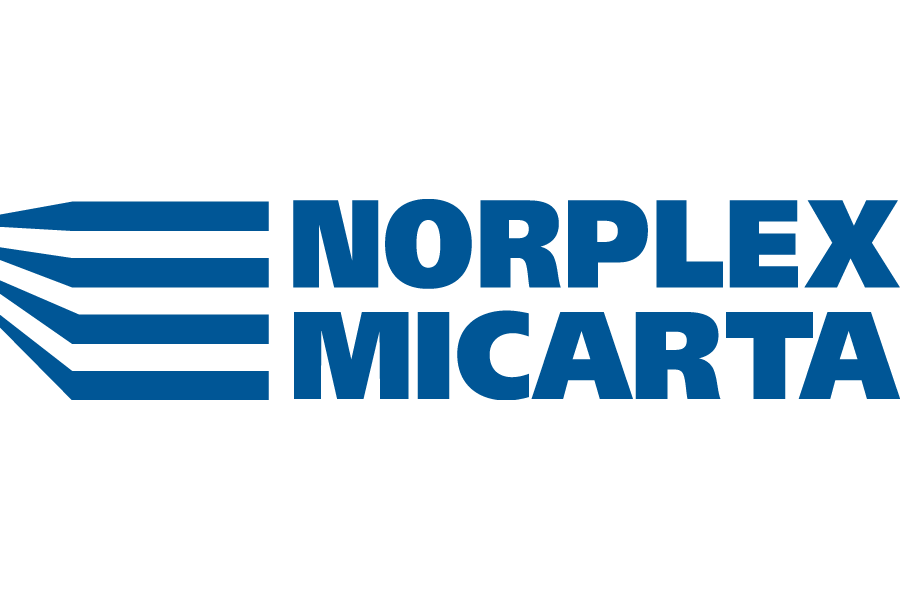Tackling Obstacles to Mass Adoption of Advanced Composites
Norplex Micarta
Although composite materials are advanced, cutting-edge materials with outstanding usability, their adoption still seems to be comparatively low. This relative obscurity may stem from labour-intensive layup procedures, specialised equipment or designed for highly specialised applications. In many of these applications, composite materials are not simply an alternative material but essentially the only viable option due to the extreme conditions requiring particular material properties. So, what is standing in the way of the mass adoption of advanced composite materials? And how is the industry tackling these obstacles?
Composite materials are composed of at least two constituent materials: the matrix, which possesses most of the properties of interest, and the reinforcement, which gives the material the boost in its mechanical properties required for it to function under extreme conditions. Often, the mixture of these two materials results in a material with better properties than either one of them alone. Composite materials have many advantageous properties, such as extremely high service temperatures, corrosion resistance, and very high strength-to-weight ratios. Yet, despite these useful advantages, composite materials are still in their infancy when it comes to mass adoption compared to other traditional materials, such as steel and plastics. Historically, the concerns that have surrounded the adoption of advanced composite materials can be reduced to the following four factors:
- Cost
- Lack of Design Tools and Data
- Legacy Assembly Processes and
- End-of-life Concerns
Let’s discuss those concerns in-depth.
1. Cost
Arguably the greatest drawback in the large-scale use of composite materials is the cost associated with them, which comes predominantly from the production process and not from the material itself. Composite materials have very complex production processes that can include labour-intensive layups and expensive and time-consuming fabrication techniques. This means that particular focus must be placed on these production processes if there is to be any headway into making composite materials more mainstream.
Recent developments have been able to do just that with new and improved techniques increasing the volume of production and enhancing the properties of the reinforcement and matrix components that make them more amenable to bulk production. Advances such as quicker curing resins, heavier duty reinforcements, and hybrid moulding techniques, are some of the areas where production cost can be driven down alongside an increase in efficiency and accuracy. Norplex Micarta, for instance, have a repertoire of resins and reinforcements with in-house expertise and information that can be used to produce composite materials economically and at scale.
2. Lack of Design Tools and Data
Composite materials are very flexible. However, this flexibility can be a drawback because of a lack of standardisation. Composite materials are often unique and specially designed for their particular application. This has led to a shortage of empirical data required to predict composite materials' behaviour without having to test them for every possible situation, thus wasting significant amounts of resources and funds. Such information would be required for larger-scale applications as the cost of errors would be much more impactful at such proportions.
Strides have been made over the years in simulation technology that can model and evaluate input data from the reinforcement materials and their orientation within the matrix (the primary determinants of the strength and stiffness of the material) and simulate the behaviour of the composite material in a wide variety of conditions. This technology is already being extensively used in the aerospace industry and is beginning to gain footing in the wider academic and manufacturing community. More attention is being paid to this field, increasing the availability of useful data and laying the foundations for more expert researchers in the process.
3. Legacy Assembly Processes
A basic principle of design is the minimisation of parts and mechanical fasteners. It is only good practice to streamline design so that the parts involved in any structure or device are as few as possible. However, it is inevitable that some structures will require the fusion of more than one part, bringing us to the old problem of assembling parts made of composite materials.
A solution to this problem could be adhesives that can be specially adapted to work with composite materials. Although thermoplastic composite materials can be welded together, thermoset composites cannot, and adhesive bonding is the only other viable option besides mechanical fastening. Adhesives have the potential to be as sturdy and durable as welding is with metals. Adhesives are already a well-known fastening method used in large-scale production within industries such as the automotive industry, construction and electronics.
It is not unreasonable to expect adhesives to have the same impact in the production of structures that use composite materials. However, there will be challenges in this solution as adhesives compatible with composites and dissimilar material surfaces (such as metal, wood, and plastics) will need to be further researched. Yet, that is a relatively minor obstacle to overcome.
4. End-of-life Concerns (Recyclability)
Thermoset composites have a reputation of not being recyclable since they do not melt after fully curing. Upcycling could be a way of circumventing the recycling problems of composite materials. Energy recovery is a last resort to recover the embodied energy within the materials. Although there is limited research on the subject, it shows that the reinforcements from composite materials can be recovered and reused in the production of new products even if the matrix has to be completely sacrificed.
Advanced Composites, the materials of the future, today.
Advanced composites have a host of properties that make them stand out. Corrosion resistance, stiffness, suitability to cryogenic and elevated temperatures, and excellent electrical properties are some of these properties that make composites materials to be reckoned with. The production obstacles associated with them should be considered problems to be solved over time, especially with the world moving towards more sustainable and energy-friendly materials.
Norplex-Micarta is a leading manufacturer of high-grade thermoset composite materials, using epoxy, phenolic, melamine, vinyl ester, and silicone resins in conjunction with an almost endless range of reinforcement fibres. Their products can be manufactured into speciality sheet products, pre-pregs, rods, and moulded shapes, and they can be designed to meet special engineering requirements.
Visit the Norplex-Micarta supplier page for more information on their materials listed on Matmatch and to get in direct contact with them.
Article by Norplex-Micarta
Norplex-Micarta is a leading manufacturer of high-performance thermoset composite materials based on impregnation and lamination technology. Norplex-Micarta manufactures the highest quality specialty sheet products, pre-pregs, rods, molded shapes, and tubes to meet demanding applications for OEMs and fabricators around the world.

